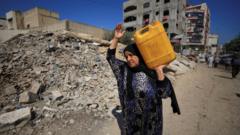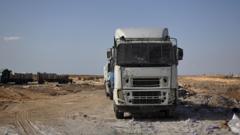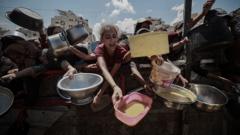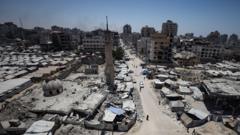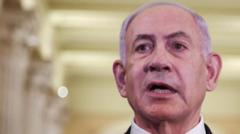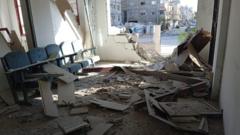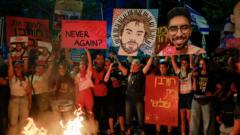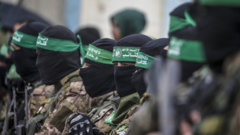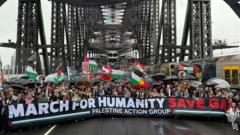Amid ongoing war conditions and an economically devastated Gaza, Hamas manages to pay civil servant salaries through a secret system, raising concerns about equity and financial sustainability. As food shortages deepen, the unequal distribution of resources fuels resentment against the group.
Hidden Payment Routes: How Hamas Sustains Civil Servant Salaries Amid Crisis
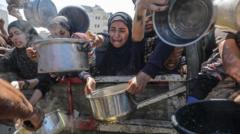
Hidden Payment Routes: How Hamas Sustains Civil Servant Salaries Amid Crisis
Despite crippling conflict, Hamas continues a clandestine cash payment system for civil servant salaries, but rising tensions and resentment persist.
In the midst of a prolonged conflict and severe economic conditions, Hamas has maintained an underground cash-based system to continue salary payments to approximately 30,000 civil servants, totaling $7 million. Despite fighting that has weakened its military strength and heightened political pressure, the group manages to provide these token payments, often just over 20% of pre-war salaries, every ten weeks.
According to interviews conducted by the BBC with several civil servants, many received about $300 recently, yet the severity of inflation in Gaza has worsened the situation significantly. The price of basic commodities has skyrocketed, exemplified by reports of flour costing as much as $80 per kilogram. This has led to increased discontent among employees who feel unsatisfied with their reduced salaries amidst rising living costs.
The challenges in receiving salaries in Gaza are exacerbated by the absence of a working banking system. Israeli military operations frequently target salary distribution points, creating dangerous conditions for employees tasked with collecting their wages. Reports have indicated that individuals receive encrypted messages instructing them to meet at specific locations, often under dangerous circumstances, to collect their salaries discreetly from unidentified distributors.
One anonymous civil servant echoed the heightened level of danger, sharing experiences of Israeli strikes near salary distribution points. Political tensions further complicate the situation, with Hamas attempting to persist financially despite loss of administrative oversight. The Israeli military has claimed responsibility for eliminating key figures within Hamas’s financial hierarchies, such as Ismail Barhoum, yet the group reportedly retains significant financial reserves, estimated at approximately $700 million, held in underground facilities prior to recent escalations in conflict.
Hamas’s funding strategies previously relied heavily on generated revenue from taxes and import duties within Gaza, alongside support from international allies, namely Qatar and Iran. In the face of war, Hamas has resorted to levying taxes on traders and dramatically inflating prices on goods, especially luxury items like cigarettes, which have surged from $5 to over $170 per box. While these actions are intended to sustain the financial needs of the governing body, they have led to significant public backlash, particularly from those who feel marginalized.
Alongside cash payments to civil servants, Hamas is criticized for preferential distribution of food and aid only to its supporters. This selective provisioning has incited resentment among the broader population suffering from acute shortages. Residents express frustration as they witness Hamas affiliates receiving food parcels while others, like Nisreen Khaled, a single mother of three, suffer from hunger, emphasizing the perceived inequity amid dire humanitarian circumstances.
Israel has levelled accusations against Hamas for diverting aid intended for the wider population, claims which Hamas disputes. Nonetheless, reports indicate an alarming reality where essential resources are often monopolized by those linked to the group, as Gaza struggles with the repercussions of ongoing warfare and humanitarian crises.

